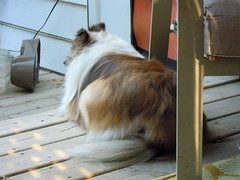The standard SV version comes with the following features:
- The nav system with GPS/cellular based mapping and charge station locator
- Bluetooth handsfree phone system
- Cruise control
- Regenerative braking which engages the electric motor to slow the car during deceleration and charge the battery
- 16: allow wheels
What Does the Leaf Cost?
What's the Cost of the Leaf?
The MSRP for the SV starts at $32,780.
The SL version of the Leaf includes all the above SV features plus the following:
- A solar panel built into the spoiler to trickle charge the auxiliary battery (not the main drive battery)
- Review video monitor to see behind you while backing up
- Cargo cover
- For lights
- Auto on/off headlights
- HomeLink universal transceiver for remote control of charging and other settings
The MSRP for the SL model starts at $33,720.
Aside from the MSRP, you'll need to factor in the $2000 price tag of the home charging station, which is going to be a must-have for most owners. Charging from the standard 110v with an extension cord is neither practical or able to deliver a full charge.
So, adding in the cost of the home charger, and with a zero downpayment and five year financing, the SV with cost about $619/month, while the SV will be about $671.
There's also a three year lease option for both the SV and SL which comes in at $405 and $435 respectively with a $1999 initial payment.
Check out the Nissan price estimator for more information.
Of course, any discussion of the cost is incomplete without mentioning the federal and state tax rebates available.
The federal government is currently offering a $7500 rebate for vehicles purchased in or after 2010. Please note that this is a non-refundable rebate, so unless you own $7500 or more in taxes during the year of purchase you won't be able to take full advantage of it. Still, for most potential buyers, the federal rebate is going to represent a significant savings.
Many states are also offering rebates. This is far from a complete or fully up-to-date list, so please check with your state government for details. But, at the time of this writing, the following states offer rebates.
California is currently offering a rebate of up to $5000 for individuals and businesses. The rebate will theoretically be offered until 2015, but total funding is limited. As of March 31, 2011, $5,563,929 remained in the fund. So, it seems unlikely that the rebate will last until 2015 without further funding.
Colorado offers a tax credit of up to $6000 for purchase or lease of an EV until January 1, 2012.
Connecticut will offer free parking for properly registered EVs.
Florida will allow unlimited us of HOV or carpool lanes for EVs with a state issued decal. Property owners can also apply to their local governments for funding to offset the cost of installing a charge station.
Georgia offers a $5000 income tax credit for the purchase of an EV, and a 10% tax credit for the charging equipment, up to a maximum of $2500. The state also allows unlimited use of HOV lanes.
Hawaii is providing a rebate of 20% of the EV purchase price, up to a maximum of $4500 per vehicle. If a charger is purchased as well, the maximum goes up to $5000. The rebate should run until September 30, 2011, or until the funds are exhausted. As of January 1, 2011, there was $1,400,000 remaining in the fund.
Illinois did offer a rebate of up to $4000 toward the incremental cost of an EV, but the current fund is exhausted. As of this time, the state is working to amend the law to extend the fund, but currently no rebates are available.
Maryland offers a $2000 tax credit against the excise or sales tax imposed for the purchase of an EV.
Oklahoma provides a rebate of up to 75% of the qualified cost of installing EV infrastructure. This rebate will run until December 31, 2014.
Oregon offers a tax credit of up to 35% of the cost of an EV, but only when used in a trade or business.
Pennsylvania has an income tax credit of up to $1000 for the cost of an EV which will expire in December 31, 2011.
Rhode Island offers a non-refundable income tax credit of 25% of the federal rebate earned when purchasing an EV.
South Carolina has an income tax credit of 20% of the federal rebate earned when purchasing an EV.
Utah offers a non-refundable tax credit of up to $605 for the purchase of a new EV, which will expire on December 31, 2013.
Washington will exempt the purchase of an EV from state sales/use tax and other motor vehicle sales/use taxes until July 1, 2015.

